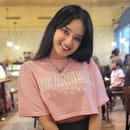“When I met you, I thought you were straight.”
“Despite knowing you, you don’t seem bisexual, no matter how I look at it.”
“Are you sure you are queer? You don’t look queer at all.”
If any of these sound familiar, I get it. Ever since I came out to my friends and family about my bisexuality a couple of years back, I have confronted questions on the validity of my queerness. My typical response would be to prove my bisexuality to them by either listing all the little things about me that reflect my queerness or overcompensating for my supposed straightness by excessively highlighting my non-heteronormative encounters. Despite all my efforts, they were never fully convinced, and comments on my queerness would crop up in conversation every couple of months. Over time, a pattern in their arguments became evident; they all seemed to stem from the same observation — that I don’t look “queer” enough. Honestly? I see it. And yet I don’t. So, let’s talk more about the intersection of self-expression and sexuality.
This is not a rant, but it has been years of frustration in the making. Allegedly, the concern is that I don’t dress like a bisexual woman. Even if I am satisfied with how I express my bisexuality, it does not seem to be enough for my peers. I need to be dressing more masculine or goth or hyper-feminine or hippie or alternative or just about anything — anything in extremes. Being basic is not queer enough; I cannot just consciously wear a bright crop top with a pair of jeans and claim to be queer. My existence needs to be rooted in a state of excess — from an excess of piercings and jewelry to an excess of alternative makeup or clothing — otherwise, my queerness won’t be picked up by their “gaydar”. Perhaps I need to dye my hair a vibrant shade or get all the pride merch around for my accessories. Or perhaps I should not. Even a lack of these will make me look queer because, as a woman, heteronormative femininity is the red zone. Enjoying what society deems to be ‘typical’ for a woman my age is unacceptable; I always need to make a statement by standing out from straight women. Basically, being “basic” is the reason why I will never look queer enough, and either way, it is exhausting.

Endless cycles of exhausting self-doubt and constant dismissal from peers aren’t only limited to feminine-presenting bisexual women like me but also extend to other queer folks who blend in with their self-expression. Knowing that I am queer and communicating that verbally should be good enough. Still, the lack of wholehearted acceptance from strangers and those close to me makes me rethink my self-expression almost every day. I lose parts of my identity as I try to fit into what their definition of queer is every time I notice myself thinking about which one of my outfits or makeup looks is bisexual. Where does the line fall? Between the strict definitions of what is queer and what isn’t, at what point does one start looking queer enough? Just because we identify as queer should not necessitate all external aspects of our life also to be visually queer. Feeling unseen when I am me ultimately reveals itself to be a hidden lack of acceptance by society — wouldn’t every outfit I wear or makeup look I do be inherently queer, given that it is an extension of me? We need to embrace the fact that queer folks express themselves in a myriad of ways, and there is no set appearance to define queer.
To all my queer friends that question their expression of queerness every time they step out of the house, I hope this is a reminder that our queer identity is an intrinsic part of us. Even when we exist in a society that imposes external definitions on our sexuality and self-expression to validate our existence, know that you are queer enough, no matter what you wear or look like. So go on and rock those basic fits, or go all out and slay, as long as you’re being your most authentic and happy self!




